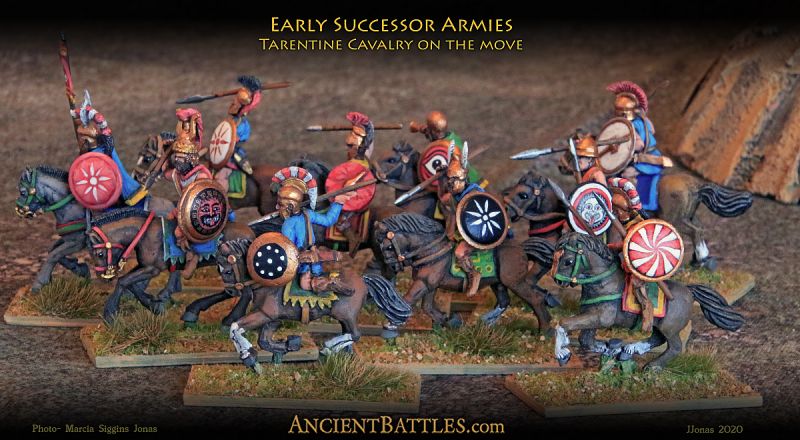
|
Military miniatures, ancient history, Macedonians and Successors, Alexander the Great battles campaigns scenarios for Warhammer Ancient Battles |
updated 06/082020






The phalanx is the core
unit in the Early Successor army. Above various ancient figures
(including some very old 25mm figures)
battle Paul Rigby's nicely done, and much better fed, 28mm
Polemarch miniatures. This was a Warhammer Ancient Battles Successors
clash. (WIP)

In a classic game, my Epirote (Pyrrhus of
Epirus) WAB army takes on Don Manser's rock hard Seleucid army.
My elephant was too late to turn the flank and I was crushed by the
weight of his elite Seleucid silver shields. My Old Glory models and
Don's Foundry elites duke it out.


The phalanx needs flank
protection and these Tarantine cavalry are favorites. Originally from
the heel of Italy these cavalrymen with javelins and large shields
changed
cavalry tactics. Before they came east as hirelings of Antigonos
Monopthalmos, cavalry rarely used shields.
After their successes, many Greek and Macedonian cavalry began to shift
to shorter spears, and/or javelins and large shields.
Most of these models are by Relic Miniatures, on mixed horses, a few Old
Glory and Magister Militum oldies fill out the troop.


The Successors fielded
useful troops from their currently controlled provinces. Here former
Persian empire light cavalry
called hippakontastai are skirmishing at close quarters with the
Tarentines. These Persians types are generic enough to work with
Persian,
Imperial Macedonian, Bactrian, Eumenid, and any other far eastern
Satrapal cavalry levy.

Here some heavy
Thessalian cavalry on the right are striking at some lesser armored
mounted scouts on the left.
These are mostly old Vendel figures, except for the officer on the
right.



Thracians were colorful mercenaries and
levies. These are armed with the rhomphaia which were one or two handed
chopping weapons
like scythes. The rhomphaia became more common after the Early Successor
period.


Hoplites were hired and
fought for all sides in Early Successor's battles. Many of the Greek
states rebelled after Alexander died.
The Athenian led revolt known as "The Lamian War" at first was
successful but the Macedonians were able to pour in massive
reinforcements and crush the rebels.

More to come... watch this space. Thanks
to Marcia for the very fine photos.
Miniatures on this page:
Relic
Miniatures Aventine Miniatures
Old Glory
Wargames Foundry
Newline Designs
Vendel Miniatures (currently available as Thistle and Rose
Miniatures on Facebook)